
All categories
Featured selections
Trade Assurance
Buyer Central
Help Center
Get the app
Become a supplier

(1171 products available)

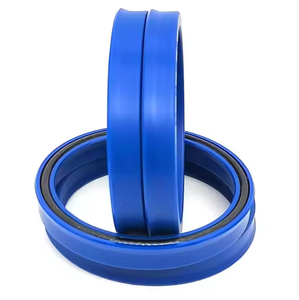








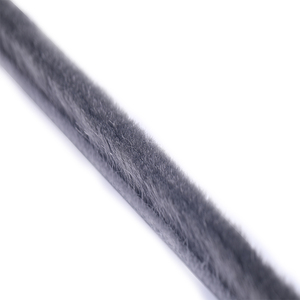


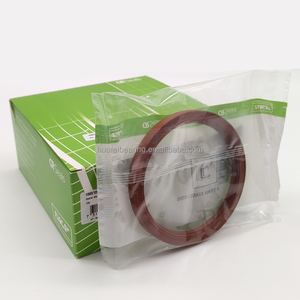

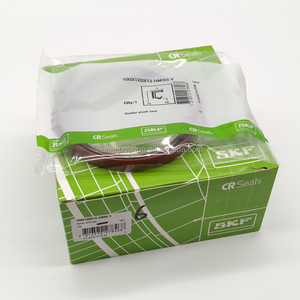
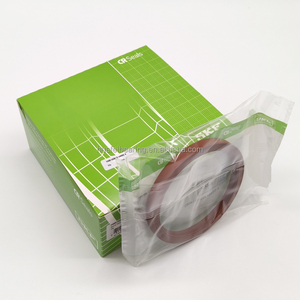




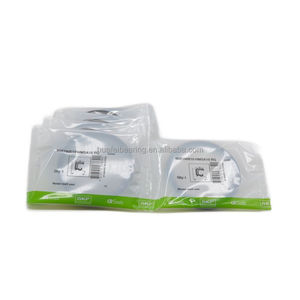
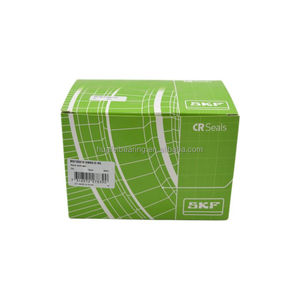

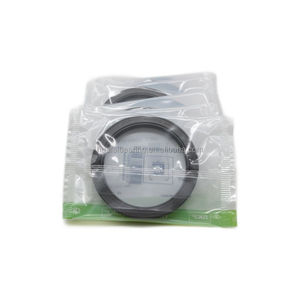
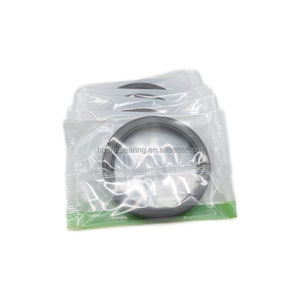











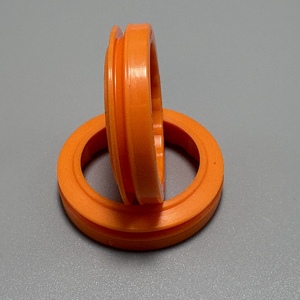









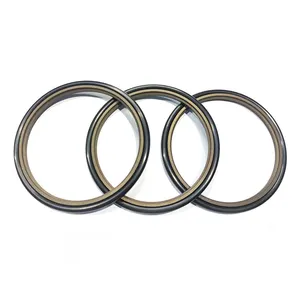


There are several types of high-temperature-resistant wiper seals that are developed for specific applications. Such applications include hydraulic and pneumatic systems. In detail, they include the following:
Rubber Wiper Seals
Rubber Wiper Seals are common in several applications. These applications include automotive and industrial machinery. They are made of high-temperature-resistant compounds like silicone or fluorocarbon. These materials enable them to endure extreme heat. Besides, they still remain flexible and provide a good sealing effect even in temperatures exceeding 200°C.
PTFE Wiper Seals
Wiper seals are made from PTFE (Polytetrafluoroethylene). These seals offer outstanding resistance not only to high temperatures but also to a wide range of chemicals. They remain functional in temperatures up to 260°C. This makes them ideal for use in the most severe industrial environments. Additionally, their low friction properties ensure smooth operation in environments that have sensitive surfaces.
Thermoplastic Wiper Seals
Fluoropolymer-filled thermoplastic elastomers form the basis of this type of wiper seal. It offers an advanced degree of wear resistance against abrasion. This group of materials includes high-performance additives such as Molykote PTFE or graphite. These materials are ideal for use in heavy-duty applications. Note that these seals are suitable for short-term exposure to temperatures above 100°C.
Metal-Backed Wiper Seals
These seals combine the flexibility of elastomers with the strength of metal. They are generally designed to carry out extreme sealing applications. Metal-filled elastomers make them withstand high temperatures beyond 300°C. In addition, the metal backing not only reinforces the seal but also offers mechanical support in the most severe operating conditions.
Custom High-Temp Wiper Seals
Custom high-temp wiper seals are designed using specialized materials to fit unique application requirements. These may include operating conditions and specific dimensional needs. In detail, they employ strategies that increase their performance in extreme environmental settings. These strategies may include using a blend of high-performance elastomers coupled with protective additives.
High-temperature-resistant wiper seals are essential to several industries since they maintain equipment reliability and performance in extreme environments. The following are common industrial applications of high-temperature-resistant wiper seals:
Aerospace
High-temp wiper seals are essential in areas like avionics and engine components, where extreme heat and pressure conditions occur. The seals not only contribute to system reliability and safety but also minimize the effect of contaminants. In addition, they ensure the optimal functionality of critical components in this high-stakes environment.
Chemical Processing
Wiper seals with high heat resistance are typical in chemical processing plants. This is due to their ability to withstand both high temperatures and aggressive chemical exposure. In these plants, the seals are commonly used in pumps, valves, and reactors. They help minimize leaks and keep the systems' integrity intact while protecting sensitive components.
Oil and Gas
High-temperature-resistant wiper seals are necessary for the oil and gas industry to perform reliably in extreme conditions. Usually, they are found in drilling equipment, pumps, and downhole tools. Since these tools operate in great depths of heat and pressure, the seals help preserve the efficiency of the equipment. They do this by assuring that the seals can withstand not only the temperature extremes but also the mechanical stresses associated with deep-earth drilling.
Power Generation
In the power generation sector, high-temperature-resistant wiper seals are typically in turbines, generators, and steam engines. The seals here help maintain a proper sealing in systems that create and endure significant heat. Further, they are able to minimize wear and tear on critical components. This contributes to improved efficiency and reduced downtime in plants, which, therefore, assures a smooth operation.
Metalworking Industry
In this industry, these seals are commonly found in machinery used for cutting, welding, and molding processes. In particular, the seals are used in equipment exposed to high heat and friction levels. The seals work by protecting the machinery from metal shavings, heat, and other contaminants. They thus prolong the life of the equipment, enhancing safety, which is a critical factor in an environment where machines operate under severe conditions.
A high-temperature-resistant wiper seal is designed with specialized features to function effectively under extreme conditions. Below is a detailed description:
耐高温材料
The seal is normally made of custom elastomers. Common materials in this category are fluorocarbon, silicone, and PTFE. These materials provide excellent resistance to heat. In most cases, the seals are expected to endure temperatures from 200°C to 260°C. Moreover, they still maintain flexibility and sealing properties in the most extreme of conditions.
特殊設計のブレード
Typically, the design of the wiper seal's blade is an important component of its functionality. In detail, the shape and angles of the blade are normally optimized to effectively wipe away contaminants, debris, and fluids. They also minimize wear on the surface they come in contact with. In addition, their designed channels help in the efficient removal of materials. This prevents buildup and ensures that the seal remains unobstructed during operations.
圧力耐性
A high-temperature-resistant wiper seal is normally created to handle significant pressure differentials. These pressure differentials are commonly found in hydraulic and pneumatic systems. Usually, they are constructed with a reinforced backbone that maintains the seal's integrity even under high-stress conditions. This feature is particularly important in industries where equipment operates at very high pressures.
アダプティブフィット
Wiper seals are designed to fit into a wide range of equipment and environments. Normally, they maintain a consistent sealing performance. Usually, they adapt closely to varying surfaces and wear over time. Therefore, this flexibility ensures that even in applications prone to significant temperature fluctuations, the seal will make due and effective coverage.
簡単なインストールと交換
Although designed for high performance, these seals ensure low maintenance costs for the end user. In detail, the wiper seal is fabricated to allow for an easy installation and removal process. It, therefore, reduces the cost of downtime. Also, easy access for replacement is critical in the most environments, particularly those that operate under extreme heat and stress.
Choosing the ideal high-temperature-resistant wiper seal for one's client involves considering several key factors. Below are these factors in detail:
Operating Conditions
Consider the environment in which the seal will have to operate. For instance, choose materials that can withstand not only high temperatures but also chemicals and extreme pressures if the environment is like that. Operating temperatures should equally be noted. Go for a seal that can handle temperatures exceeding 200°C in case of such intense heat.
Material Composition
Different materials provide varying levels of heat resistance. Silicone, fluorocarbon, and PTFE are the standard ones. Decide which material is ideal for the unique conditions of the intended application. For instance, silicone is better for highly oxidative conditions while PTFE is ideal for high-temperature and low-friction environments.
Seal Design
The design of the seal, particularly the profile and dimensions, will impact its performance. Ensure the seal is designed with an optimal wiping edge. An optimal wiping edge ensures effective debris and fluid removal. In addition, ensure it has a reinforced backbone. The backbone maintains its shape under mechanical stress.
Compatibility
In this case, check if the wiper seal is compatible with the fluids and materials of the equipment it will be used on. This helps prevent the seal from wearing out too quickly due to chemical interactions. In addition, if the seal will be in contact with metals, the buyer should ensure that the seal’s materials can resist scoring.
Application-specific Requirements
Assess the needs of the specific industry. Is it aerospace, automotive, or any manufacturing process? All these factors will influence factors like required durability, expected loads, and environmental seals. Nonetheless, each industry needs a seal that can withstand extreme conditions while ensuring minimal maintenance and maximum uptime.
The seal's material composition is a key factor in determining its resistance to high temperatures. Commonly, materials like silicone, fluorocarbon, and PTFE offer ideal heat resistance. In addition, a seal’s mechanical design contributes to its durability. Seals with reinforced backbones maintain structural integrity in the most extreme conditions. Moreover, exposure time to high temperatures impacts the seal's lifespan. A good quality seal will withstand not only the extreme heat but also be able to last throughout its expected lifetime even with prolonged exposure.
High-temperature-resistant wiper seals have been specially completed to ensure they have easy and hassle-free installations. The good thing about them is that they are designed to allow easy access for replacement. This services the seals without having to completely disassemble the equipment. It handles an easy and quick turnaround, thus having very minimal downtime.
These are specially designed to function in hostile conditions. They survive extreme operating temperatures as high as 260°C using premium formulations such as PTFE and silicone. They smoothly wipe contaminants off surfaces thanks to their uniquely designed edge geometries. Additionally, they effectively remove particles and fluids without hindering equipment functionality.
A PTFE Wiper Seal offers unmatched resilience in chemically aggressive and heat-intensive environments. Its superbly composed, non-stick surface wards off debris and contaminants efficiently, ensuring prolonged equipment integrity. Commonly, it is highly favored in precision-dependent industries such as aerospace and pharmaceuticals, where reliability and performance are critical.
Industrial set-ups employ high-temperature-resistant wiper seals to support machinery used in baking and grilling food preparation. They help protect vital components by minimizing the penetration of food particles, moisture, and other impurities into the seals. This practice promotes longer equipment durability, hence giving the ideal seal for quality food processing.